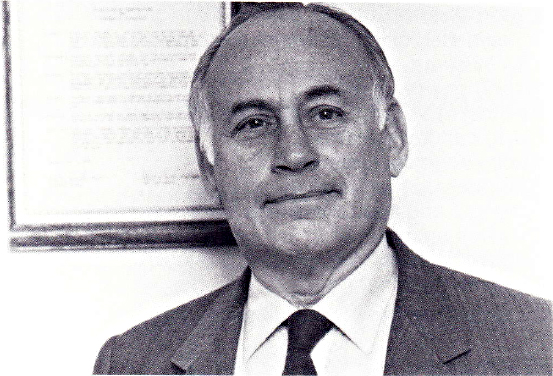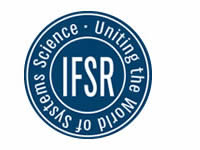IFSR Newsletter 1991 No. 2 (28)

Professor Enrique G. Herrscher, IFSR Newsletter 1991 No. 2 (28)
Enrique G. Herrscher
San Martin 551 – piso 4″ Otic.44
1004 Buenos Aires, Argentina
A model showing how the incorporation of parts into a larger entity enhances their value – or why the price of an ice-cream cone is not proportional to its size.
Some time ago (summer 1989) this NEWSLETTER published my article, “The Wave-tide Model”. In a similar rein, I now want to present a metaphor of another well – known systems problems: the determination of the “value of synergy”: by how much may the “value” of a system exceed the sum of the values of its parts. In my country, Argentina – and probably in most other parts of the world – ice cream is sold in various sizes and at various prices; let us say that a 3 oz cone (a) is sold at the equivalent of one dollar; a 5 oz one (b) at US $ t,SO; and an 8 oz (c) cone at two dollars.
I have always been intrigued by the quantitative implications of these different size-price combinations. For instance: could I gel 2 oz of ice cream (the difference between sizes a and b) at 50 cents (the difference between prices a and b)? Or: Why should (c), that weights (a + b), cost two dollars, instead of US $ 2,50 (prices a + b)? Even disregarding the indirect expenses and the cone itself as irrelevant here, there is obviously no proportionality when comparing “whole entities”.
The small amounts involved prevented me from pursuing this research. However, some years ago I faced this same problem again, but on that occasion it involved several million dollars. Working for ITI I was coordinating the economic aspects of a manufacturing and technology transfer proposal for CANTV the Venezuelan state-owned telephone company. CANTV at that time one of the toughest and most intelligent buyers I have ever encountered, wanted a detailed description of the different manufacturing levels a factory of telecommunication equipment might cover. What they required, in order to make their choice of an optimal level of integration, was an analytical ice cream model!
The manufacture of central office equipment (COE) was at that time visualized in the form of a complex cost “tree up” consisting of raw materials, primary parts, secondary parts, components, subassemblies, assemblies and final switching equipment to be installed in a central office. Each of those categories had subdivisions and alternative compositions; therefore it was possible – depending on the technology – to define more than those seven levels, while on the other hand one could bypass certain levels – for instance subassemblies – and thereby reduce their number.
The further upstream the manufacturing integration extended, the more profound the technology transfer would be, and the bigger and more complex the factory which would have to be built. Conversely, the more downstream the Venezuelan authorities defined the integration level – for instance, just assembling subassemblies – the simpler the transformation process they would have to learn and carry out, but the more they would have to buy.
This gradual disaggregation posed the same problem as the ice cream decomposition exercise. Starting from an elementary basic structure A + B = C, the value of C certainly was not the sum of the values of A and B. When selling parts or portions of a technology that has been developed as a whole, the value pertaining to a whole, the “price of synergy”, would have to appear somewhere.
Using yet another metaphor, I will call that difference “goodwill”. Most non-accountants and many accountants as well – may be surprised by my using this term. The concept is generally utilized in cases of acquisition, merger or divesture, in order to establish the amount by which the value of a going concern exceeds its book value.
Now the “book value” is essentially a “sum of parts”: the aggregate of the diverse assets a corporation owns (plant, property & equipment, inventory, accounts receivable, etc.) less the liabilities it owes to third parties. This difference is called the “net worth”. But on the other hand, for someone acquiring a going concern its “real net worth” is not the difference between what the company owns and what it owes, but its ability to produce future earnings. This ability is a true systemic concept, for it is not derived from the isolated parts, but from the interaction among them.
In actual practice, two approaches to goodwill are used. The more academic view defines it as “the intangible possession that enables a business to continue to earn a profit in excess of the normal or basic rate of profit earned by other business of similar type” (J. M. Rosemberg: Dictionary of Business and Management, Wiley, New York, 1978). The more practical view defines it as the difference between the “capitalized value of earning power” (Lexique, Union Europeene des Experts Comptables, Economiques et Financiers, UEC, Dusseldorf, 1964) and the said Net Worth.
As this is not an article about accounting, the characteristics and comparative merits of these two approaches will not be discussed here. lt suffices to say that for our present purpose – the metaphorical use of an accounting concept – the second approach is more applicable.
Coming back to the example of telephone equipment technology transfe4 the starting point was the “capitalized value of earning power” of the whole system, the “C” of the above basic structure. Let us now assume that the numerous parts that, at different levels, form C, are simply A and B. The value of A will then be C less an “adjusted” B, as follows: A = C- B + (Br- B) or A = C-2B + Br; and the value of B = C-2a+ Ar.
The factor “r” denotes the difference between the “systemic value” of a part of a system, i.e. its value when “functioning within a system”, and its “isolated value”. The sum of these “isolated values” of the parts is equivalent to the Net Worth concept in accounting, while the sum of the “systemic values” exceeds the value of the system as a whole, because of duplications that occur when one decomposes the full value of the parts of a whole.
It is not the purpose of this article to develop mathematical formulas for such a “value tree up” of the actual example, but rather to present some basic rules of our so-called “ice cream model”:
- Whenever elements such as A and B form part of a system C, three types of values appear: the value of the isolated parts A and B; the value of the whole system C; and the value of the parts as pertaining to said system, Ar and Br.
- In most cases, i.e. when the system enhances the value of the parts, C will be more than A + B, the difference being what we call the “value of synergy” or “goodwill”.
- This difference derives from a dissimilar focus when assigning value to a system and to its parts. Speaking in accounting terms, the parts are worth what they are and the system is worth what it does.
- Knowing the values of the isolated parts A and B of the system C and that of the resulting difference or “goodwill” is not enough. Often we need to divide the “goodwill among the parts, as opposed to regarding it as an indivisible entity.
- In other words, we need to know Ar and Br: the “systemic values” of the parts, i.e. the sum of their intrinsic value plus the advantage of their being linked to the whole.
- The coefficient r assumes a new value at each level of disaggregation. This is because the system advantages are spread over all the parts in relation to their “contribution to synergy”.
- Therefore, the “systemic values” of the parts that constitute a system cannot be added: while C is more than A + B, Ar + Br is more than C.
The above analysis does not imply that “values” should be considered exclusively from an economic viewpoint. On the contrary: the example chosen is merely a single one, and these concepts should also be applicable to less quantifiable, soft systems. At any rate, we now know why the prices of ice cream cones will never be proportional to their sizes …
